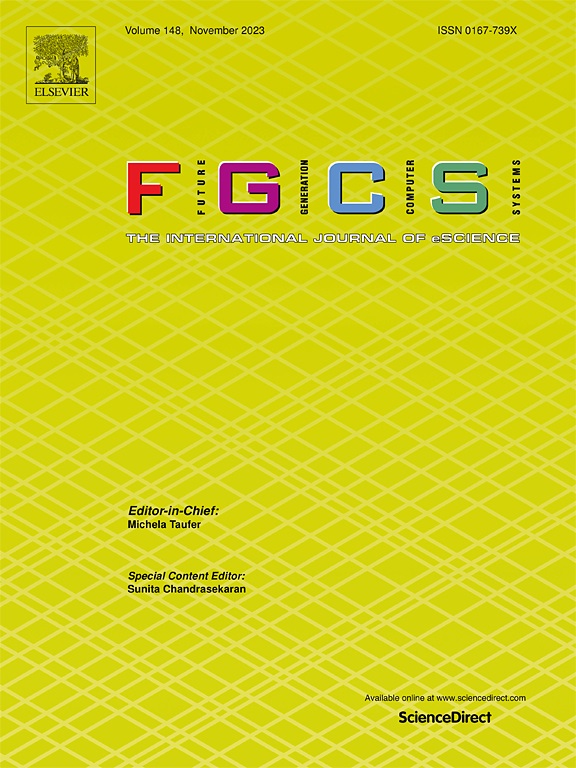跳转索引:支持区块链上高效的区块间查询和查询验证
IF 6.2
2区 计算机科学
Q1 COMPUTER SCIENCE, THEORY & METHODS
Future Generation Computer Systems-The International Journal of Escience
Pub Date : 2024-10-19
DOI:10.1016/j.future.2024.107556
引用次数: 0
摘要
去中心化应用是 Web3 新模式的驱动力,需要持续访问区块链数据。然而,区块链规模的不断扩大及其读取操作的顺序扫描性质阻碍了这些应用的采用,这带来了明显的低效瓶颈。此外,区块链上记录的数据量越来越大,使得资源有限的轻节点在获取信息时依赖于不受信任的全节点,因此需要查询验证协议来确保结果的完整性。基于这些原因,我们在本文中提出了跳转索引,这是一种索引数据结构,允许用户同时从区块链的多个区块中快速检索信息。我们的解决方案还可用作认证数据结构,以保证轻节点查询结果的完整性。我们讨论了跳转索引的理论属性,提出了构建和查询跳转索引的高效算法,并详细介绍了其计算复杂性。最后,我们通过在以太坊区块链上进行实验评估来评估我们建议的有效性。作为参考用例,我们将重点放在流行的 CryptoKitties 应用程序上,并模拟了用户寻求检索服务生成的事件的场景。我们的实验结果表明,由于在选定的搜索窗口内搜索时间最多为对数,因此使用跳转索引可以不断提高速度。与目前使用的简单顺序方法相比,这种方法最多可将访问区块的数量减少两个数量级。本文章由计算机程序翻译,如有差异,请以英文原文为准。
Skip index: Supporting efficient inter-block queries and query authentication on the blockchain
Decentralized applications, the driving force behind the new Web3 paradigm, require continuous access to blockchain data. Their adoption, however, is hindered by the constantly increasing size of blockchains and the sequential scan nature of their read operations, which introduce a clear inefficiency bottleneck. Also, the growing amount of data recorded on the blockchain makes resource-constrained light nodes dependent on untrusted full nodes for fetching information, with a consequent need for query authentication protocols ensuring result integrity. Motivated by these reasons, in this paper we propose the skip index, an indexing data structure that allows users to quickly retrieve information simultaneously from multiple blocks of a blockchain. Our solution is also designed to be used as an authenticated data structure to guarantee the integrity of query results for light nodes. We discuss the theoretical properties of skip indices, propose efficient algorithms for their construction and querying, and detail their computational complexity. Finally, we assess the effectiveness of our proposal through an experimental evaluation on the Ethereum blockchain. As a reference use case, we focus on the popular CryptoKitties application and simulate a scenario where users seek to retrieve the events generated by the service. Our experimental results suggest that the use of skip indices offers a constant multiplicative speedup, thanks to search times that are at most logarithmic within a chosen search window. This allows to reduce the number of visited blocks by up to two orders of magnitude if compared to the naive sequential approach currently in use.
求助全文
通过发布文献求助,成功后即可免费获取论文全文。
去求助
来源期刊
CiteScore
19.90
自引率
2.70%
发文量
376
审稿时长
10.6 months
期刊介绍:
Computing infrastructures and systems are constantly evolving, resulting in increasingly complex and collaborative scientific applications. To cope with these advancements, there is a growing need for collaborative tools that can effectively map, control, and execute these applications.
Furthermore, with the explosion of Big Data, there is a requirement for innovative methods and infrastructures to collect, analyze, and derive meaningful insights from the vast amount of data generated. This necessitates the integration of computational and storage capabilities, databases, sensors, and human collaboration.
Future Generation Computer Systems aims to pioneer advancements in distributed systems, collaborative environments, high-performance computing, and Big Data analytics. It strives to stay at the forefront of developments in grids, clouds, and the Internet of Things (IoT) to effectively address the challenges posed by these wide-area, fully distributed sensing and computing systems.

 求助内容:
求助内容: 应助结果提醒方式:
应助结果提醒方式:


